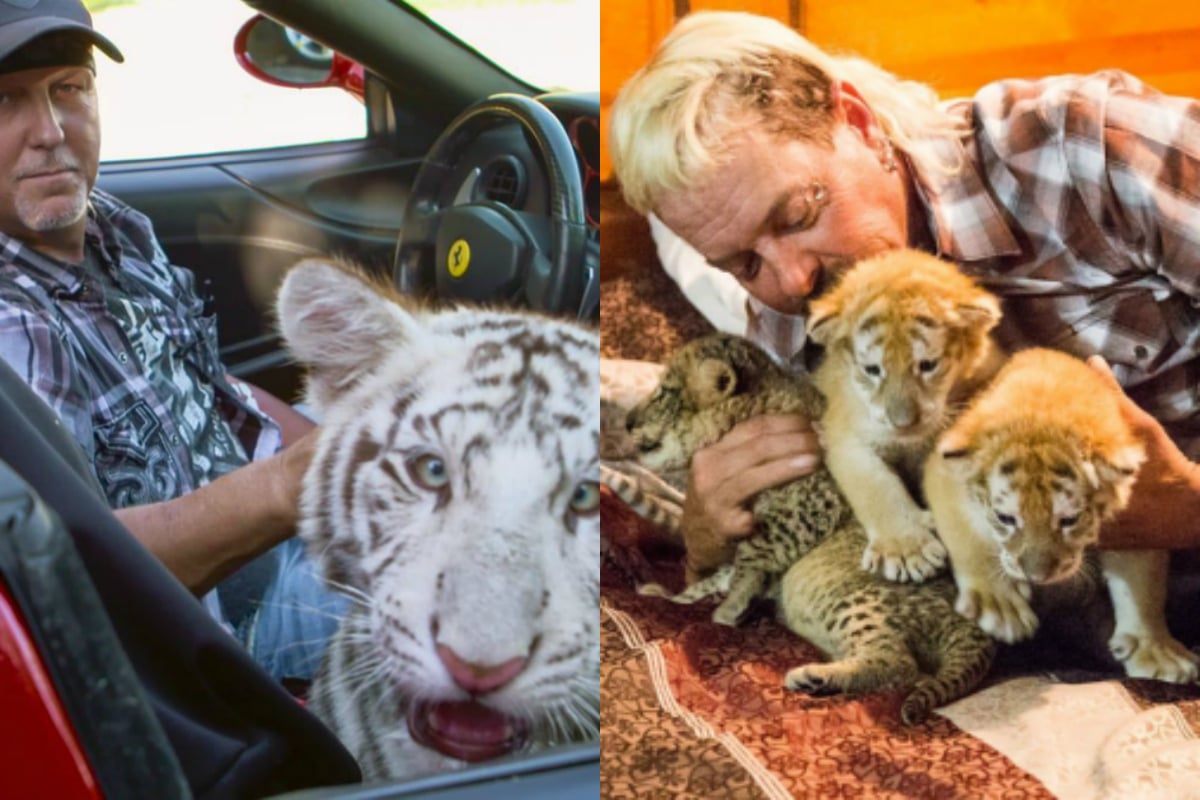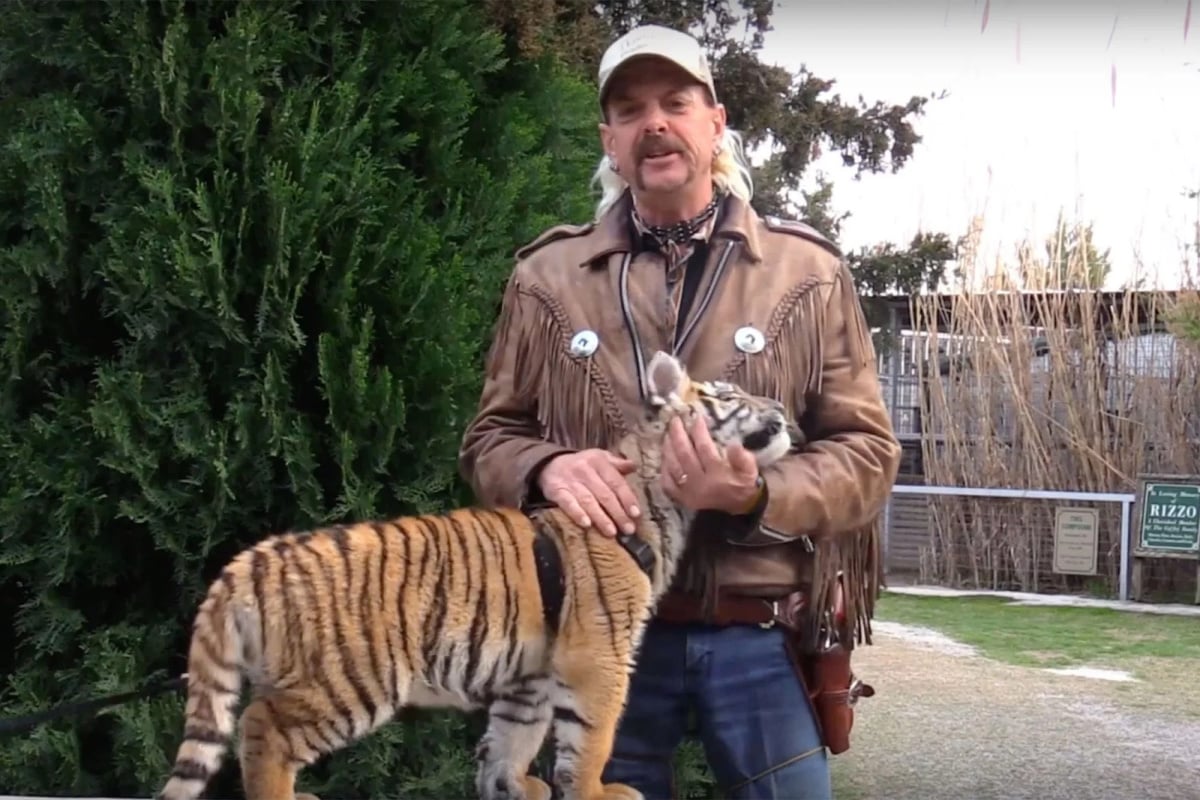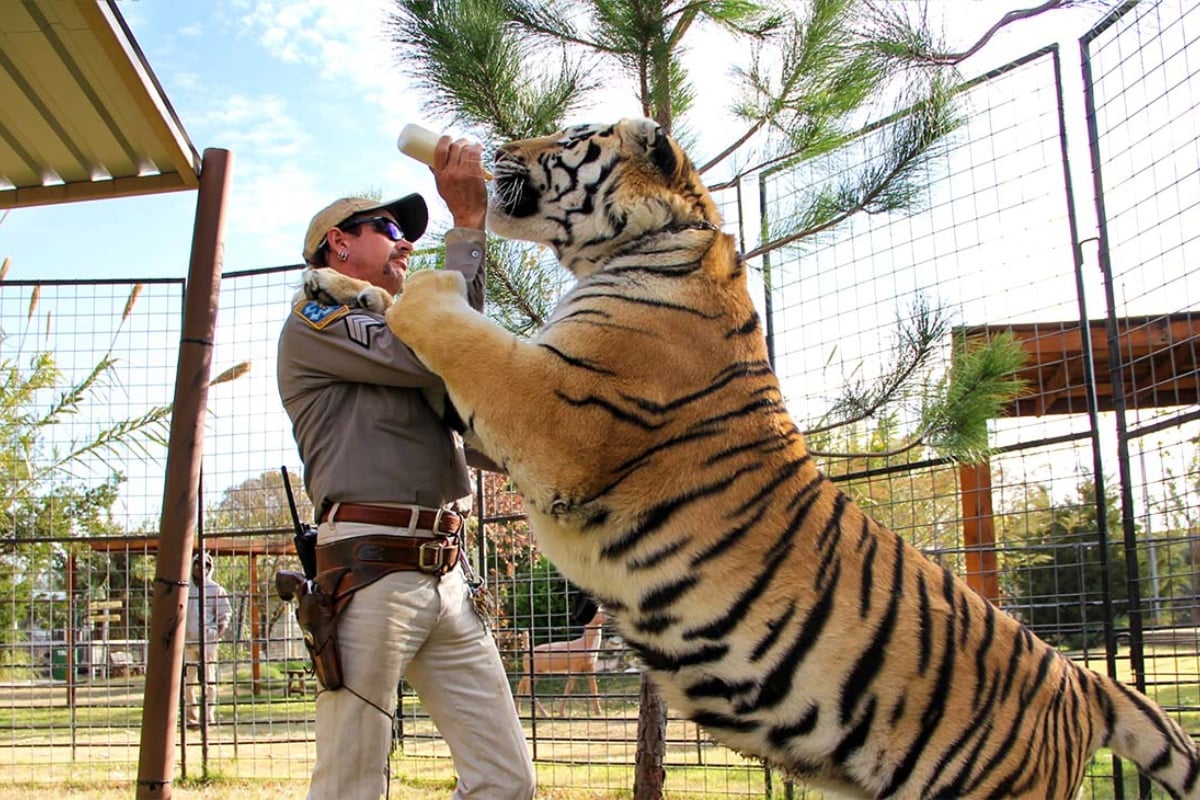
The stories in Netflix’s Tiger King are undeniably… bizarre. There’s “gay, gun-toting cowboy with a mullet” Joe Exotic, cult-like zoo owner Doc Antle, and cat rescuer Carole Baskin, who has been under a cloud of suspicion for more than 20 years after her husband mysteriously disappeared.
Plus there’s about 200 other characters so strange it’s hard to believe this is all real. But it… is.
What’s also real is the animal abuse. But in Tiger King, the abuse of the big cats and other animals – including chimps, monkeys, snakes and elephants – owned by those profiled in the series took a backseat to the meth, music videos and murder-for-hire plot.
Watch the trailer for Tiger King. Post continues below video.
That’s not to say those things were not worthy of the story. Of course they are. Besides shining a light on terrible behaviour and crime among animal collectors, it made for shocking, and bloody entertaining, viewing.
There’s a reason it’s all anyone can talk about right now (besides that whole global pandemic thing).




Top Comments
So, after 18 months probation and a $25,000 fine, what happened next? There seems to be no follow up, because he was still basically doing exactly the same thing for another, what, 12 years? How was he allowed to run this place when it was staffed by random people with no training? How was the place not shut down after Saff had her damn *arm torn off*? This place seems to have been well known locally, it's astonishing that it was able to run for as long as it did.